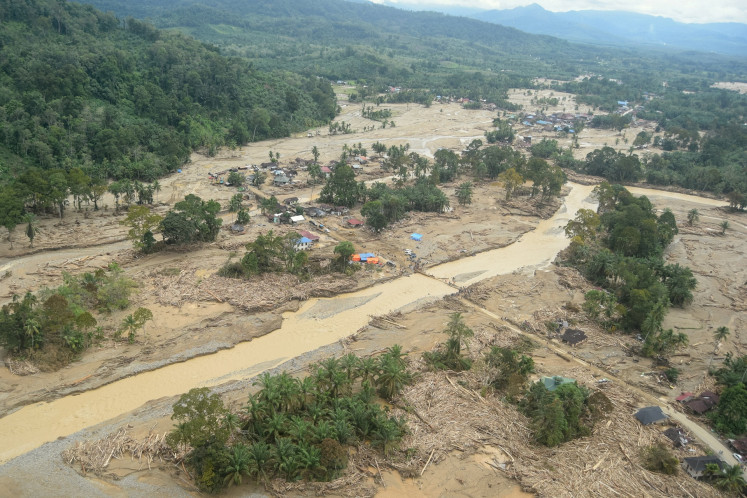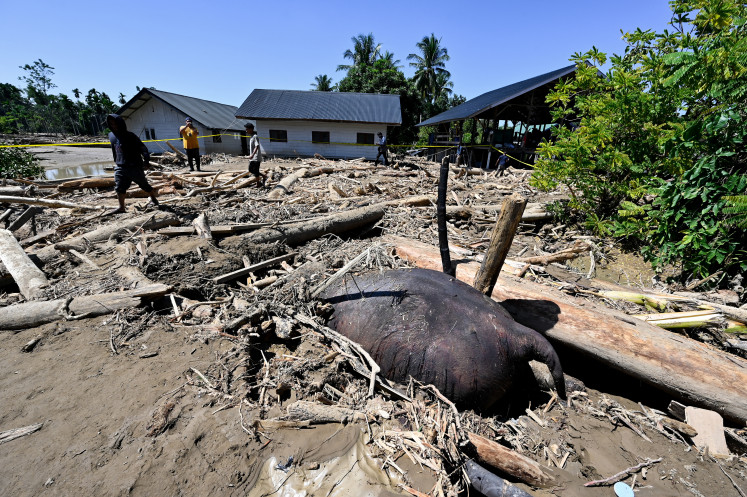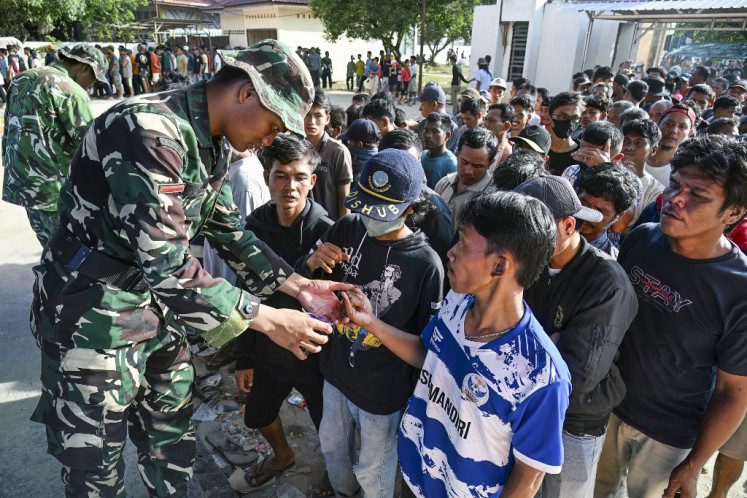Popular Reads
Top Results
Can't find what you're looking for?
View all search resultsPopular Reads
Top Results
Can't find what you're looking for?
View all search resultsBali opens biodiversity center
Indonesia and the US launched a biodiversity research center here Tuesday, paving the way for scientists to draw a comprehensive picture of Indonesia’s diverse range of species
Change text size
Gift Premium Articles
to Anyone
I
ndonesia and the US launched a biodiversity research center here Tuesday, paving the way for scientists to draw a comprehensive picture of Indonesia’s diverse range of species.
Funded by USAID and supported by the US Smithsonian Institution Natural Museum, the Indonesian Biodiversity Research Center (IBRC) is a joint research endeavor pursued by three Indonesian universities and two US universities.
These are the Bali-based Udayana University, Manokwari-based Papua State University and Semarang-based Diponegoro University, as well as Norfolk-based Old Dominion University and the University of California (UCLA), Los Angeles.
This US$600,000 center will be set up at the Udayana University Biomedic Lab in Denpasar.
IBRC chief researcher Paul H. Barber, from the UCLA, said the establishment of the center was a strategic move because Indonesia, an archipelagic country with mega biodiversity status, was far behind in terms of the number of researchers and studies on biodiversity.
“The center will significantly improve Indonesia’s capacity to study its own biodiversity,” Barber said.
One of IBRC initiators, I Gusti Ngurah Mahardika said the center would serve as a focal point for biodiversity research, training and species collection.
“The IBRC is the magnet that will attract Indonesian and international scientists to carry out researches focusing on biodiversity,” Mahardika said.
Around 30 Indonesian and 30 US scientists will form the core research team at the center, he said.
“These researchers will employ the latest technology and methods in molecular genetics, to gain an understanding of the intricate nature and formation of Indonesia’s biodiversity.”
The center, he said, was also expected to provide students with broader access to qualified and up-to-date research, and would encourage more local and foreign researchers to explore Indonesia’s biodiversity.
The first phase of the center’s work will begin this month and run through May 2011, involving trained researchers from the participating universities.
The researchers will compile information on different species from the collections and inventories of other Indonesian institutions, as well as international publications.
Rectors of the three Indonesian universities and UCLA’s representative signed an MoU to mark the center’s launch.
Following the launch ceremony, the Udayana University held a symposium on molecular approaches in biodiversity research, presenting the results of workshops and research carried out since last year.
Indonesia is home to more than 30,000 recorded species of plants, and more than 3,000 mammal, bird, reptile and amphibian species.
The archipelagic country, one of the world’s richest nations in terms of biodiversity, is rapidly losing hugely valuable resources through the destruction of forests, coral reefs and watersheds, scientists say.










